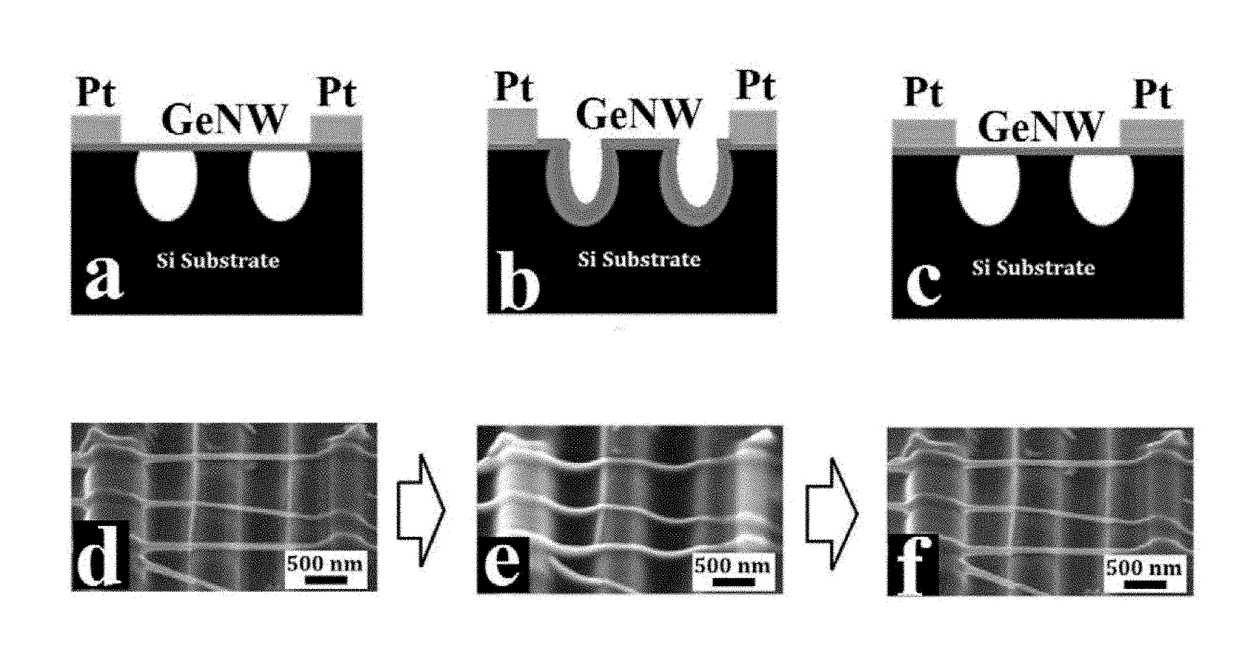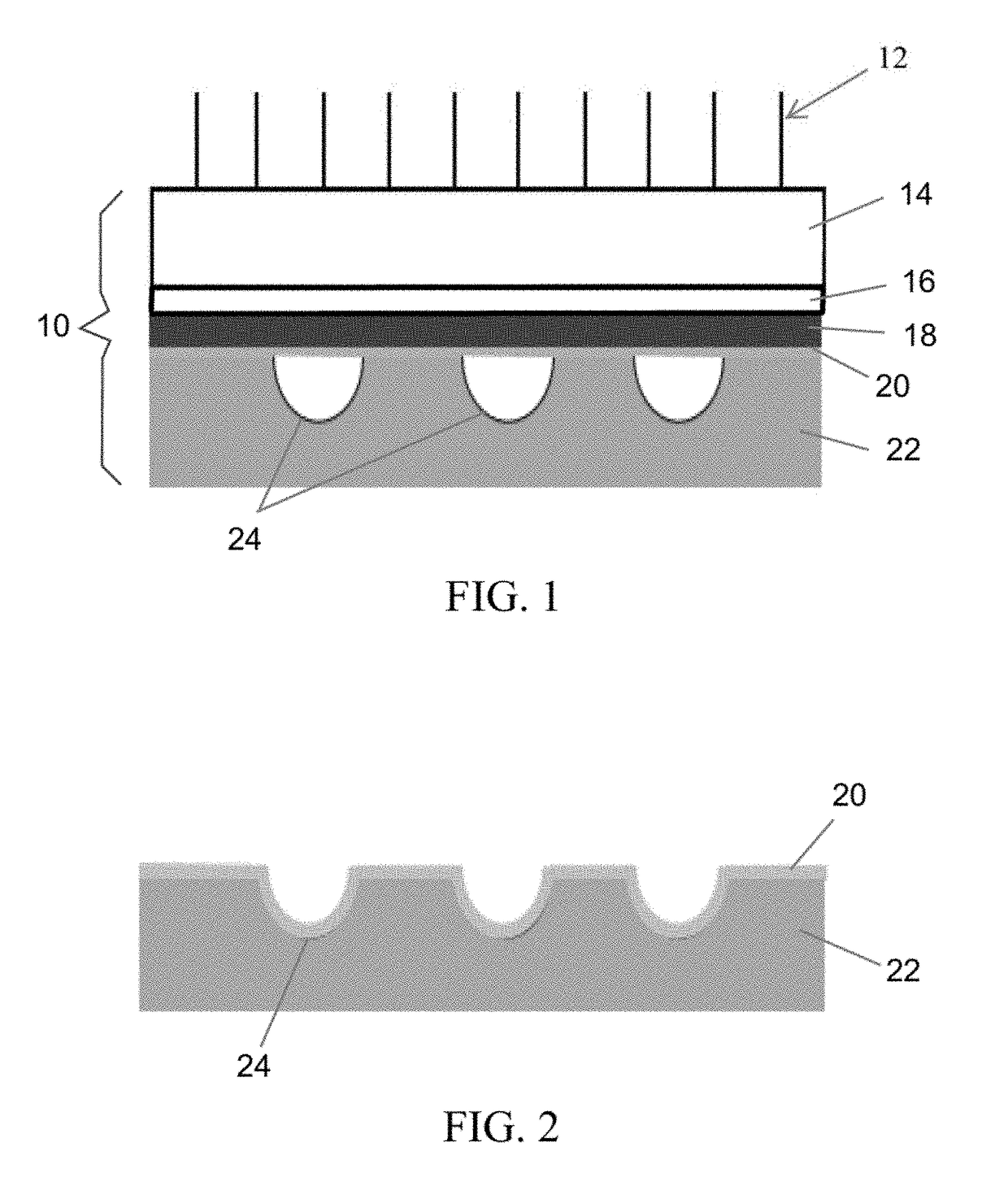Processes for shaping nanomaterials
a nanomaterial and processing technology, applied in the field of nanomaterials, can solve the problems of limited treatment of a single nanowire, limited functionality of unpatterned graphene, and inability of current nw processing techniques to perform complicated shape changes
- Summary
- Abstract
- Description
- Claims
- Application Information
AI Technical Summary
Benefits of technology
Problems solved by technology
Method used
Image
Examples
Embodiment Construction
[0025]The present invention provides processes for shaping 1D and 2D nanomaterials using laser or other high speed intensive optical source processing systems, referred to herein as laser shock strain engineering (LSSE) processes. In particular, laser shock pressure can be employed to perform various forming approaches, including but not limited to conformal shaping, uniform bending, cutting, and lateral compression, preferably without unintentionally fracturing or cracking the nanomaterial. Such capability can be used to create nanomaterials with tunable shapes, allowing for the accommodation of various structural requirements, including flexible electronics. Such a capability can also be used to tunably change various properties of nanomaterials, for example, electrical, chemical, and optical properties, which may provide opportunities for developing miniature devices, for example, for use in electronics. According to a nonlimiting aspect of the invention, local strains may be ind...
PUM
 Login to View More
Login to View More Abstract
Description
Claims
Application Information
 Login to View More
Login to View More - R&D
- Intellectual Property
- Life Sciences
- Materials
- Tech Scout
- Unparalleled Data Quality
- Higher Quality Content
- 60% Fewer Hallucinations
Browse by: Latest US Patents, China's latest patents, Technical Efficacy Thesaurus, Application Domain, Technology Topic, Popular Technical Reports.
© 2025 PatSnap. All rights reserved.Legal|Privacy policy|Modern Slavery Act Transparency Statement|Sitemap|About US| Contact US: help@patsnap.com



